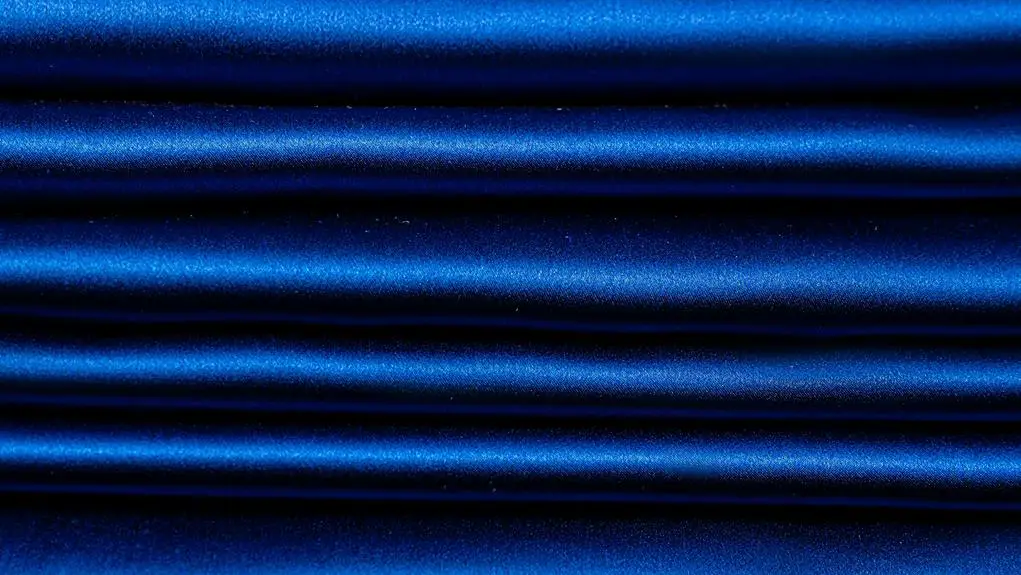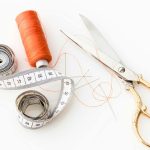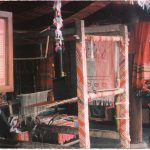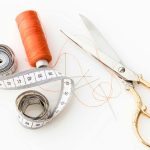When you're cutting curved fabrics, it's crucial to understand the right techniques to achieve clean edges and avoid frustration. You'll want to start with the right tools, and preparing your fabric properly can make a significant difference. Marking your cutting lines clearly is key, but there's more to it than just that. With a steady hand and a few essential tips, you can master the art of cutting curves. Curious about the specific techniques that will elevate your skills? Let's explore what you need to know.
Table of Contents
Key Takeaways
- Choose the right fabric type, as woven fabrics are easier for cutting curves compared to knits or sheers which require more careful handling.
- Use quality fabric scissors or rotary cutters, ensuring they are sharp for clean, precise cuts on curved lines.
- Mark cutting lines clearly with tailor's chalk or fabric markers, and consider using templates for tricky curves.
- Maintain a steady hand while cutting; for tight curves, turn the fabric instead of the scissors for better control.
Understanding Fabric Types
To master cutting curved fabrics, you need to understand the unique characteristics of different fabric types. Each fabric behaves differently when cut, so getting familiar with their properties is crucial for precision and ease.
Start with woven fabrics, like cotton or linen. They tend to fray easily, so you'll want to handle them gently. The good news? They hold their shape well, which can make cutting curves easier.
On the other hand, knit fabrics, such as jersey or spandex, stretch significantly. When cutting these, you must be careful not to distort the fabric, as it can lead to uneven edges.
Next, consider sheer fabrics like chiffon or organza. They're lightweight and often slippery, making it tricky to cut curves accurately. Using weights to keep them in place while you cut can help.
Finally, think about specialty fabrics like velvet or suede. These have a nap that can change appearance with different cutting directions, so always pay attention to the grain.
Understanding these characteristics helps you choose the right cutting techniques for each fabric type, ensuring your curves turn out beautifully. The more you know, the more confident you'll feel when tackling those intricate designs.
Choosing the Right Tools
Selecting the right tools is essential for achieving clean and precise cuts in curved fabrics. Start by choosing high-quality fabric scissors or rotary cutters.
Fabric scissors provide control, while rotary cutters are excellent for long, continuous curves. Whichever you choose, make sure they're sharp; dull blades can lead to jagged edges.
Next, consider a cutting mat. A self-healing mat protects your surfaces and prolongs the life of your blades. If you're using a rotary cutter, a mat is a must for safety and accuracy.
Don't overlook the importance of weights and rulers. Fabric weights help hold your fabric in place, preventing slipping during cutting. A clear ruler or quilting ruler can guide your cuts, ensuring they're straight and true.
Preparing Your Fabric
When you're preparing your fabric, the right choices make all the difference.
Start by selecting an appropriate fabric type and remember to pre-wash and iron it for the best results.
Choose Appropriate Fabric Type
Choosing the right fabric type is crucial for achieving smooth and precise cuts on curved patterns. When you select a fabric that complements your design, it makes the cutting process easier and enhances the overall appearance of your project. Fabrics can vary significantly in terms of weight, stretch, and drape, so it's important to consider how these factors will interact with your curved patterns.
Here's a quick reference table to help you choose the right fabric type:
| Fabric Type | Characteristics |
|---|---|
| Cotton | Easy to cut, stable, minimal stretch |
| Silk | Lightweight, drapes beautifully, slippery |
| Jersey Knit | Stretchy, hugs curves, can be tricky |
| Denim | Heavyweight, durable, may need extra care |
Pre-Wash and Iron
Before cutting curved fabrics, it's essential to pre-wash and iron them to prevent any unwanted shrinkage and ensure a smooth cutting surface. This step is crucial because fabrics can behave differently after washing. By pre-washing, you eliminate surprises later on, especially if your fabric contains cotton or other natural fibers that tend to shrink.
Start by checking the care instructions on your fabric. Wash it according to those guidelines, using the same water temperature you'd typically use during regular laundering. Avoid using fabric softeners, as they can affect the fabric's ability to hold shapes and adhere to patterns properly.
Once your fabric is clean and dried, it's time to iron. Set your iron to the appropriate temperature for your fabric type. Smooth out any wrinkles carefully, using steam if necessary.
An even, flat fabric ensures accurate cutting, especially on curves where precision is key.
Use Proper Tools
Using the right tools makes all the difference in preparing your fabric for cutting curved shapes. When you're ready to tackle those intricate curves, having the right equipment ensures a smoother process and better results.
Here's what you'll need:
- Rotary Cutter: A rotary cutter glides effortlessly along the fabric, allowing you to cut clean, smooth curves without any jagged edges. It's essential for precision.
- Cutting Mat: A self-healing cutting mat protects your surfaces and extends the life of your rotary cutter blades. It provides a stable base for cutting and helps prevent slipping.
- Fabric Weights: Instead of pinning your fabric, use fabric weights to keep everything flat while you cut. This minimizes movement and ensures your fabric stays in place, giving you more accurate cuts.
With these tools in hand, you'll find that preparing your fabric becomes a breeze. Remember, investing in quality tools not only saves you time but also enhances your overall sewing experience.
Marking Cutting Lines
When you're marking cutting lines on curved fabrics, using the right tools is essential for precision.
You'll want to explore techniques that help you achieve smooth curves and ensure accuracy in your cuts.
Let's break down the best practices that can make this process easier and more effective.
Tools for Marking Lines
You'll find that having the right tools for marking cutting lines can significantly enhance your precision and efficiency in working with curved fabrics. The right tools not only improve accuracy but also save you time and frustration.
Here are three essential tools you should consider:
- Tailor's Chalk or Fabric Markers: These tools are perfect for making temporary marks on your fabric. Choose a chalk that contrasts well with your fabric color for better visibility. Fabric markers are also great, but ensure they're washable or fade away after your project.
- Rulers and French Curves: A good-quality ruler helps create straight lines, while a French curve is invaluable for drawing smooth curves. These tools allow you to replicate curves accurately, ensuring your cuts follow the intended design.
- Cutting Mats: While not a marking tool per se, a cutting mat provides a clear grid that aids in alignment. It also protects your surfaces and helps you visualize your fabric layout, making the marking process more straightforward.
With these tools in hand, you'll be well-equipped to tackle marking curved lines with confidence.
Techniques for Smooth Curves
Achieving smooth curves requires precise techniques that guide your cutting lines effectively. Start by using a flexible ruler or a curved ruler to outline the desired shape. This helps you maintain a consistent curve as you mark the fabric.
If you don't have these tools, you can create a template from cardboard or paper. Cut the template to the exact curve you want, then trace around it on your fabric.
Next, use tailor's chalk or a fabric marker to draw your cutting lines. These marking tools are easy to see and won't damage your fabric. Make sure to mark both sides of the curve for better visibility when cutting.
If you're working with a pattern, ensure you follow the pattern's curve precisely. Avoid using straight lines or sharp angles; they can lead to jagged edges and uneven cuts. Instead, apply gentle pressure as you trace, keeping your hand steady.
Best Practices for Accuracy
To ensure accuracy in marking cutting lines, always take your time and double-check your measurements before you begin. Careful marking is crucial, especially when dealing with curves, as even small errors can lead to significant issues later on.
Here are some best practices to help you achieve precise cutting lines:
- Use a Clear Ruler: A transparent ruler allows you to see your fabric's pattern underneath. This way, you can align your cutting line accurately with your desired curve.
- Choose the Right Marking Tool: Select a fabric marker or chalk that contrasts well with your fabric color. This ensures your lines are visible but will wash out or fade once you're done.
- Create a Template for Complex Curves: If your design has intricate curves, consider creating a template out of paper or cardboard. Trace this template onto your fabric to maintain consistency across each piece.
Techniques for Cutting Curves
How can you master the art of cutting curves to ensure clean and precise fabric edges?
Start by choosing the right tools. Use sharp fabric scissors or a rotary cutter for smooth, clean lines. A cutting mat is also essential; it provides a stable surface and protects your work area.
Next, always mark your cutting line clearly. You can use tailor's chalk, fabric markers, or a pencil to create a visible guide that follows the curve. This step is crucial, as it helps you maintain accuracy while cutting.
When you're ready to cut, keep your hand steady and don't rush. For tighter curves, turn the fabric rather than the scissors or cutter. This technique allows for better control and reduces the risk of jagged edges.
If you encounter a particularly tricky curve, consider using a template. Trace the curve onto your fabric, making it easier to follow.
Finishing Edges Smoothly
Once you've successfully cut your curved fabric, the next step is to finish the edges smoothly to prevent fraying and enhance the overall look. A clean edge not only improves durability but also gives your project a professional appearance.
Here are three effective techniques you can use:
- Zigzag Stitch: Set your sewing machine to a zigzag stitch and sew along the edge of the fabric. This stitch helps secure the fabric fibers and prevents them from unraveling.
- Bias Tape: Wrapping the raw edge in bias tape creates a neat finish. Simply fold the tape over the edge, pin it in place, and sew along the fold for a polished look.
- Serger: If you have access to a serger, use it to finish the edges. This machine trims the fabric while simultaneously overlocking the edge, providing a clean and professional finish with minimal effort.
Whichever method you choose, take your time to ensure that the edges are finished neatly. A well-finished edge won't only enhance the aesthetics of your fabric but also contribute to the longevity of your project.
Practice Makes Perfect
Mastering the art of cutting curved fabrics takes practice, so don't be discouraged by initial imperfections. Every expert once struggled, and with time, you'll see improvements in your technique. Start with simple shapes and gradually work toward more intricate designs. You'll find that practice not only enhances your skills but also builds your confidence.
To help you track your progress, consider using the following table to note your experiences:
| Practice Session | Shape Cut | Challenges Faced |
|---|---|---|
| 1 | Basic Curve | Uneven edges, fraying |
| 2 | Complex Curve | Difficulty with scissors |
| 3 | Freehand Cut | Wobbly lines, lack of control |
| 4 | Pattern Piece | Misalignment, not smooth |
| 5 | Advanced Cut | Improved precision, smoother |
Reflecting on each session allows you to identify specific areas for improvement. Celebrate small victories along the way, and remember: the more you practice cutting curved fabrics, the more skilled you'll become. Keep at it, and soon you'll cut with confidence!
Frequently Asked Questions
Can I Cut Curves on Multiple Layers of Fabric at Once?
Yes, you can cut curves on multiple layers of fabric at once. Just make sure the layers are aligned properly and use sharp scissors or a rotary cutter for cleaner, more precise cuts.
How Do I Prevent Fabric From Fraying While Cutting?
To prevent fabric from fraying while cutting, you can use pinking shears, apply fray check, or sew a basting stitch along the edges. These methods help secure the fabric and reduce fraying during your project.
What Are the Best Fabrics for Beginners to Practice Cutting Curves?
For beginners, cotton and cotton blends are great choices for practicing cutting curves. They're easy to handle, don't stretch much, and provide a stable surface, making your cutting experience smoother and more enjoyable.
How Do I Fix Mistakes Made While Cutting Curved Lines?
If you've cut a curve incorrectly, don't panic! You can trim carefully to correct it, use a fabric patch, or embrace the imperfection for a unique touch. Just keep practicing, and you'll improve!
Can I Use Rotary Cutters for Intricate Curved Designs Effectively?
Yes, you can use rotary cutters for intricate curved designs, but you'll need to be cautious. Ensure you maintain a steady hand and use a cutting mat to achieve cleaner edges and precise curves.
- Tetron Fabric for Marine Applications: Durability and Use Cases - June 18, 2025
- Tetron Fabric for Outdoor Furniture: Weather Resistance and Care - June 18, 2025
- Tetron Fabric for Wall Coverings: Style and Application Tips - June 18, 2025







